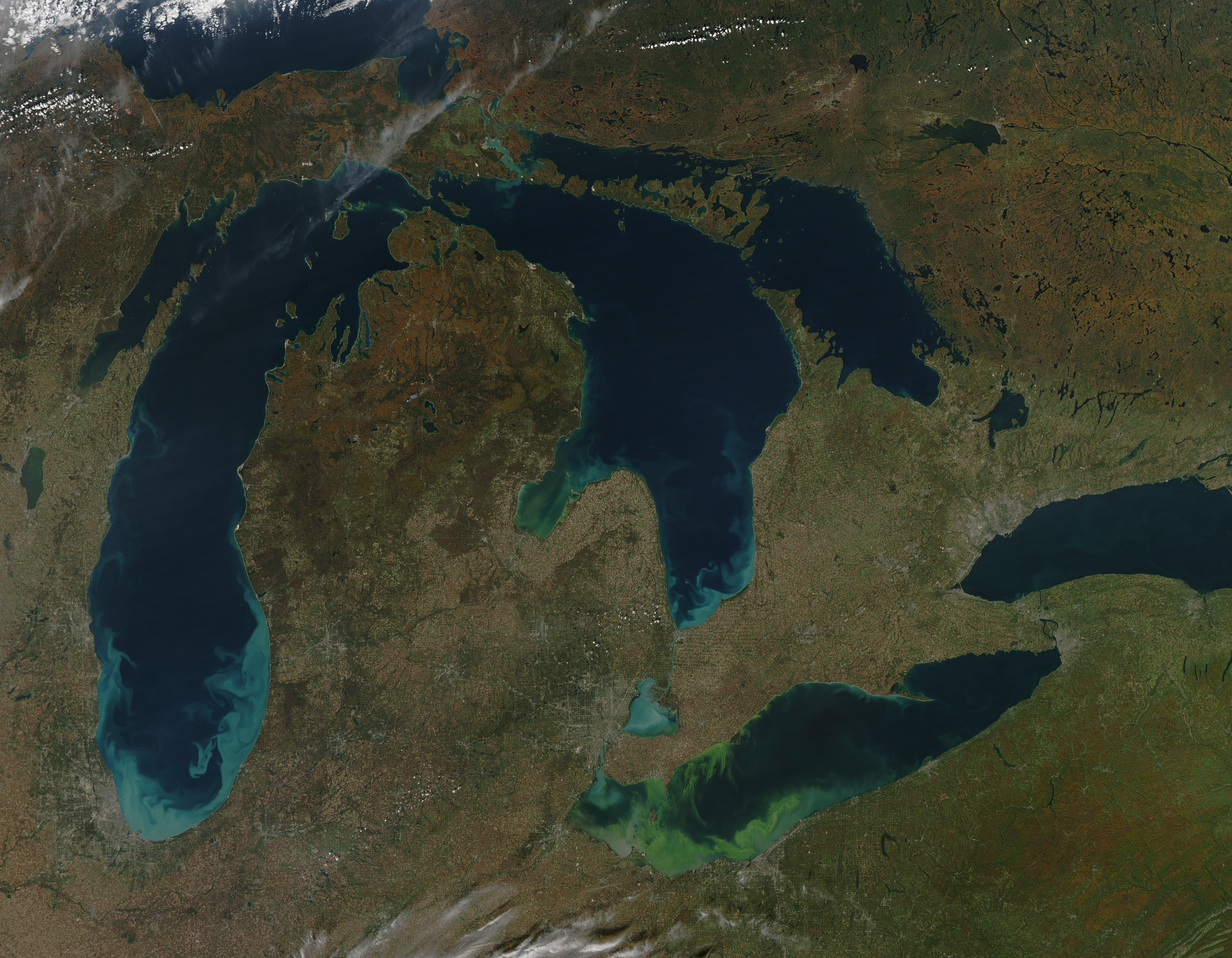You never know what will make it through the sewers and into one of our three treatment plants.
And every wastewater plant operator has a story to tell. When we asked Southerly Wastewater Plant Operator in Training Christen Wood what was the weirdest thing she's seen, here's what she said.
You might laugh, "Glee DVDs in the sewer?"
Whether you like the show or not, it's not likely that someone "flushed" them. Most often, things like this start in the trash and somehow make it to the curb in a combined-sewer neighborhood (where stormwater and sewage flow in the same pipe). The combined flow weaves its way through the sewers and into our treatment plant, in this case our Southerly plant in Cuyahoga Heights.
Again, you never know what our crews will find in the sewers.
Saturday, May 31, 2014
VIDEO: Whether you watch "Glee" or not, the irony here has got to make you laugh.
Tags:
operations,
quick clips,
sewers,
treatment plants,
video
Friday, May 23, 2014
NEWS: Could Ohio legislation help heal Lake Erie? A good step, but long journey ahead. #sb150
 |
| Hazardous algal bloom on Lake Erie, 2011. cleveland.com file photo. |
If a journey of a thousand miles begins with one step, think of Ohio Senate Bill 150 as a first step.
A cleveland.com story May 19 reported Ohio Governor John Kasich is preparing to sign a bill that could help control fertilizer phosphorus contributions to Lake Erie's toxic-algae problems. That's important, but what's more important is where (and how far) we go from here.
About algae, phosphorus, and SB 150
First, let's understand the problem.
The toxic green algae that has plagued Lake Erie in recent years may be a result of excessive amounts of phosphorus and nitrogen in the water. It negatively impacts fish and other aquatic life. There are many sources of phosphorus and nitrogen, including human waste, industrial processes, and commercial fertilizers used mainly in the agricultural industry.
SB 150, which has recently passed the State House and Senate unanimously, would require farmers who use commercial fertilizers to be certified by the state and encourage them to develop "nutrient management plans" to demonstrate they are working to control their land's runoff.
Tags:
algae,
legal,
nutrients,
public,
water quality
Thursday, May 22, 2014
NEWS: Back to the beach, Memorial Day weekend means daily water tests resume to keep beachgoers safe
Local beaches will be active this summer, and not just with local swimmers.
Starting Memorial Day weekend, Sewer District water-quality investigators will be testing beach water every day to keep you informed if you're planning a day by the lake.
This week, the Northeast Ohio Regional Sewer District resumed daily beach testing at Edgewater, Villa Angela and Euclid Beaches to determine water quality and bacteria levels throughout the summer. Daily testing will continue through September 6, 2014.
What affects water quality at local beaches
Many variables can impact the water quality of the beaches, including the presence of waterfowl at the beach, the influence of Lake Erie currents, the fate of pollutants, like raw sewage, discharged into local water bodies, and stormwater run-off, which can carry motor oil, garbage and other pollutants into local water bodies, too.
Tags:
beaches,
monitoring,
public,
water,
wqis
Tuesday, May 20, 2014
GREEN: Understanding the spectrum, our shade of green must be smart stormwater solutions [#neorsdGREEN]
The Northeast Ohio Regional Sewer District actively engages in GREEN INFRASTRUCTURE projects that promote smart stormwater solutions.
Our smart stormwater solutions always consider the following four criteria:
COST
As responsible stewards of our customers' money, we take into account the cost vs. the benefits of different methods of stormwater control—whether to go gray (build a tunnel) or green (construct a bioretention feature).
SITE CHARACTERISTICS
The decision of whether to build a tunnel or construct a bioretention feature depends on the particular characteristics of any one site and any one combined-sewer area. These characteristics include:
Tags:
#neorsdGREEN,
#PCLgreen,
consent decree,
construction,
green infrastructure,
Project Clean Lake,
stormwater,
sustainablity
Friday, May 16, 2014
PIC: This is how quickly the Cuyahoga River surged during the May 12 downpour.
Well that escalated quickly.
We've posted a few stories since the May 12 storm event that still has communities trying to clean up.
Photo by George Remias, data via USGS stream gauge along Cuyahoga River in Independence, Ohio.
UPDATE: Storm clean-up, costs, communities, and why a regional #StormwaterProgram is critical
 |
| Storm debris clogs the Cuyahoga River under Alexander Road in Valley View May 13, 2014. |
That's a question we raised here May 13. Communities are facing storm clean-up challenges while $20 million sits frozen in escrow as a result of a September court ruling that the Sewer District does not have the authority to implement a Regional Stormwater Management Program.
Much has happened this week, and we presented an update to our Trustees yesterday. The report and conversation deserves to be highlighted.
After the storm
Throughout the week, Sewer District crews have assessed the storm damage throughout the region. Debris removal and maintenance is estimated to be nearly $1 million, and erosion control and repair costs are estimated to be millions of additional dollars. This is in addition to the existing costs to maintain and repair stormwater infrastructure.
[PICS] After the storm: The regional impacts of a Northeast Ohio storm May 12, 2014nt_051314_r2 from Northeast Ohio Regional Sewer District
Under the Regional Stormwater Management Program, the Sewer District would have been mobilized to assist communities and address these problems. Unfortunately, because of litigation, the Sewer District is unable to do anything to fix these issues.
Tags:
flooding,
legal,
public,
report,
stormwater,
stormwater management program,
Trustees
Tuesday, May 13, 2014
NEWS: Litigation hinders ability to assist communities hit by Monday’s storm [#StormwaterProgram]
 |
| A stream rack holds back storm debris near Cleveland Hopkins International Airport following a heavy rain event May 12. |
Northeast Ohio communities are underwater from the storm that moved into the region on Monday night. Unfortunately, as a result of the Ohio Eighth District Court of Appeals ruling that the Northeast Ohio Regional Sewer District does not have the authority to implement a Regional Stormwater Management Program, affected communities are now left to address the aftermath without the Sewer District’s assistance and expertise.
Ironically, the storm occurred on the same day those in support of the Regional Stormwater Program filed amicus briefs with the Ohio Supreme Court on the Sewer District’s behalf. They include 18 supporting member communities (one brief), City of Cleveland, National Association of Clean Water Agencies and Association of Ohio Municipal Wastewater Agencies, Coalition of Ohio Regional Districts, The State of Ohio through the Ohio Attorney General’s Office, and The Cleveland Metroparks.
Thursday, May 8, 2014
EVENT: Smells like victory. Run a 5K through one of the country's largest wastewater treatment plants June 14
You've never run a 5K like this before.
Join us June 14 for our second annual Cuyahoga River Clean Water Classic #CWC5K, a one-of-a-kind fundraising 5K run/walk through one of the largest wastewater treatment plants of its kind in the country, the Southerly Wastewater Treatment Center in Cuyahoga Heights.
UPDATE 6/20: RESULTS POSTED! Thanks to the dozens of you who joined us June 14. We have now posted all of our results: Overall / Female / Male
Proceeds benefit three local agencies—United Way, Community Shares, and the United Negro College Fund, partners in our annual Charity Choice campaign.
The 2013 Clean Water Classic was open to employees and their families, raising hundreds of dollars for three local charities, and this year's event is open to the public for the first time ever.
RELATED: Video: See the 5K course woven through a 288-acre treatment plant from a runner's perspective
Tags:
5K,
charity,
clean water classic,
event,
public
Wednesday, May 7, 2014
VIDEO: No, we do want you to see what we allegedly don't want you to see.
What was recorded and posted to YouTube in the style of an exposé is actually a great educational resource to better understand pollution sources and their impacts on Lake Erie.
YouTube user pmc291 recently posted this video to our Facebook page under a very ominous title, "NORSD NOT WHAT THEY WANT YOU TO SEE." It shows pollution along one of Cleveland's beaches near our Easterly Wastewater Treatment Plant.
Known as White City Beach, this area has suffered from several pollution sources for many years: Combined sewer overflows, storm sewers, sanitary sewer overflows, and storm debris. Each one deserves a few words about future clean-up efforts.
Tags:
combined sewers,
CSO,
lake erie,
pollution,
Project Clean Lake,
stormwater,
video
Subscribe to:
Comments (Atom)







